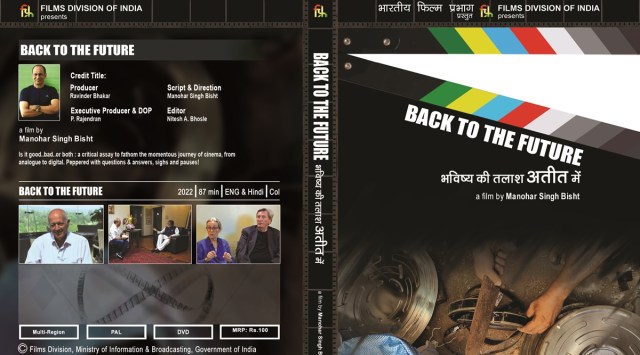With Amitabh Bachchan, Christopher Nolan as talking heads, docu at PIFF to trace history of cinema
Audiences can find a direct relation between Bisht’s 2014 film, In Search of Fading Canvas, about the lost practice of making film posters by hand, and Bhavishya ki Talash Atit Mein: Back to the Future, which shows how digital technology killed the celluloid and resulted in technicians suffering and single-screen halls closing down, among others.
 In Bhavishya ki Talash Atit Mein: Back to the Future, a number of people who worked in the celluloid era, such as film editors, camerapersons and performers such as Bachchan, speak about their experiences and the transition to the digital media.
In Bhavishya ki Talash Atit Mein: Back to the Future, a number of people who worked in the celluloid era, such as film editors, camerapersons and performers such as Bachchan, speak about their experiences and the transition to the digital media. In a slum in Mumbai, national award-winning filmmaker Manohar Bisht came across a young man who goes around the country buying boxes of old celluloid reels that are being discarded by studios and families. He makes jewellery and other artefacts from the ‘raw material’. “He is, literally, cutting up old films that are a part of cinema history because nobody wants to preserve them anymore,” says Bisht. It is with shots of scissors running across old celluloid that Bisht begins his 87-minute documentary, Bhavishya ki Talash Atit Mein: Back to the Future, which is a study of the journey of cinema from analogue to digital.
The film will be screened at the Pune International Film Festival (PIFF) on February 3, 12.30 pm, at PVR: The Pavilion Mall, Auditorium 6.
“I consider PIFF to be one of the most prominent and prestigious film festivals in the world. Jabbar Patel, who is the chairman and director of PIFF and Vishal Shinde, the deputy director (Programme and Films) are both filmmakers in their own right. So, it is an honour to be showing my film here. Through the film, I have tried to critically analyse if digital technology is good, bad or both. It is an issue that draws out questions, answers, sighs and pauses,” says Bisht, over the phone from Mumbai.
An officer with the Films Division, which has merged with the National Film Development Corporation (NFDC), Bisht has made a number of documentaries, including short films on eminent personalities such as Amitabh Bachchan and K Balachander. But, audiences can find a direct relation between Bisht’s 2014 film, In Search of Fading Canvas, about the lost practice of making film posters by hand, and Bhavishya ki Talash Atit Mein: Back to the Future, which shows how digital technology has killed the celluloid, affected the technicians and led to the closure of single-screen halls, among others. Both films highlight the traditions of cinema that have disappeared and their impact on people. In Search of Fading Canvas won him the Special Jury award at the 63rd National Film Awards in 2016.
In Bhavishya ki Talash Atit Mein: Back to the Future, a number of people who worked in the celluloid era, such as film editors, camerapersons and performers such as Bachchan, speak about their experiences and the transition to digital media. Hollywood director Christopher Nolan talks about still making films on celluloid.
“One of the problems with the digital age is archiving. While celluloid could be preserved, digital is saved in disks, drives and the cloud, which sounds risky because nothing is tangible. The Cloud, for instance, should be monitored else, one day our work could disappear,” says Bisht.








